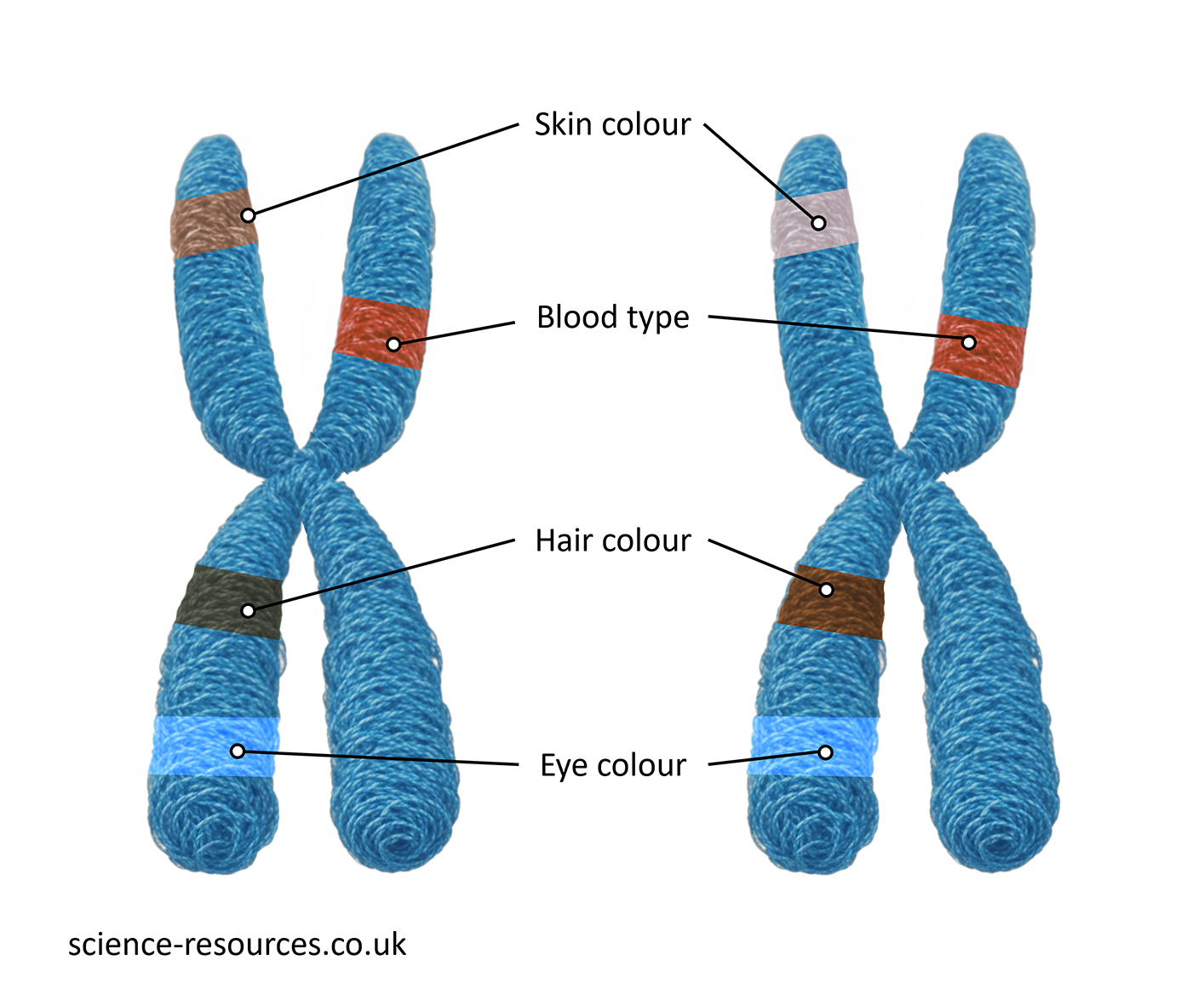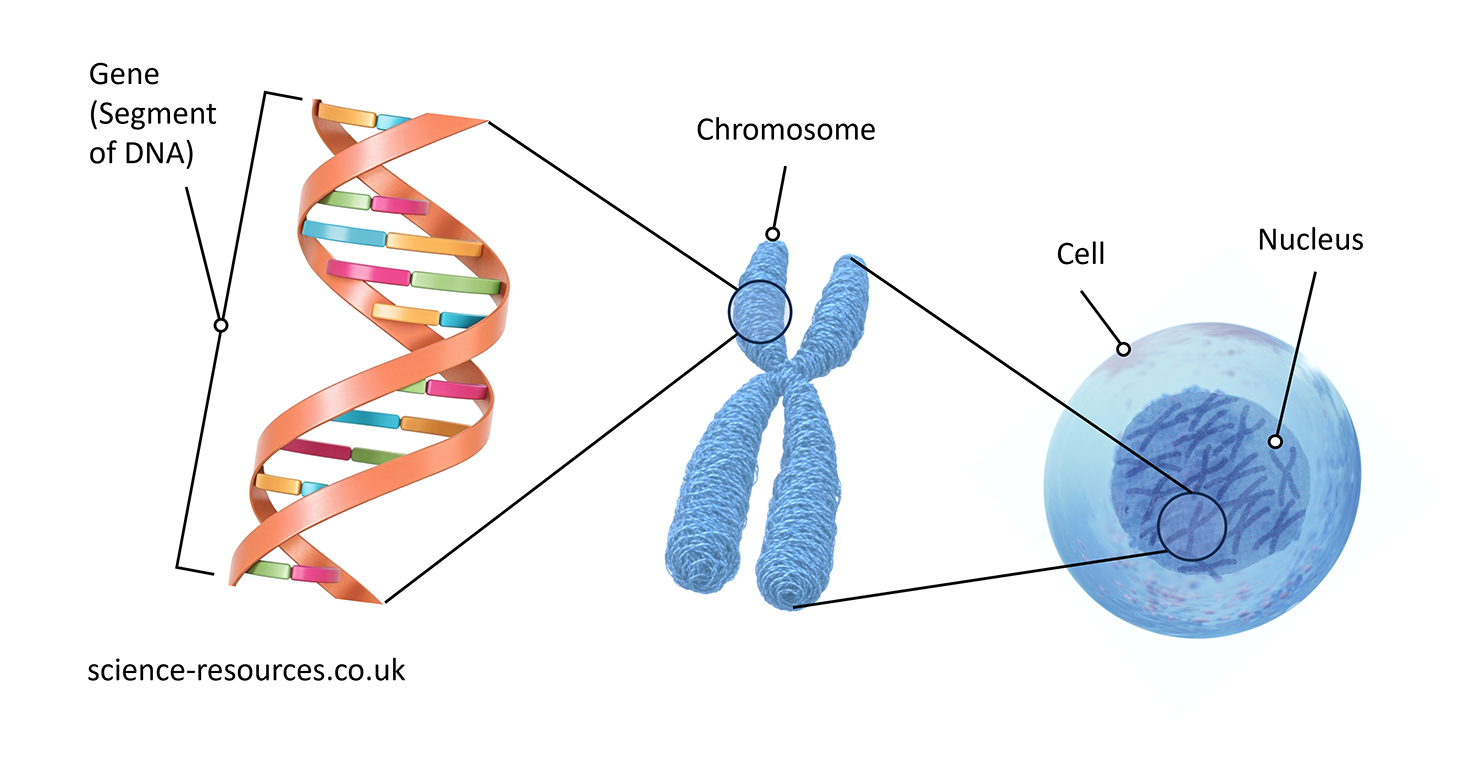DNA and inheritance
What is DNA? There are four types of bases in DNA: Thymine and adenine always form a pair, and so do guanine and cytosine. These base pairs are linked by weak hydrogen bonds. Double-helix structure of DNA
Deoxyribonucleic acid, or DNA, is a molecule that carries the information that defines our inherited traits. Our chromosomes, which are structures in the nucleus, have DNA arranged in them.
We have 23 pairs of chromosomes in each cell, or 46 chromosomes in total. We get one chromosome from each pair from our mother and the other from our father.
DNA is a kind of polymer, which is a very long molecule made of smaller molecules linked together. The DNA molecule has two strands that twist around each other in a double helix shape. The strands are connected by bonds between base pairs.
Almost every cell in your body has DNA in its nucleus. Each nucleus of your body cells has about two metres of DNA crammed into it. Your gametes, sperm or ova, have only half of that, because they combine with the other gamete during fertilisation.
All living things on Earth share the same genetic code. Bacteria, fungi, animals (including humans), plants and protists all have the same four letters in their DNA.
Genes and the Genome Chromosomes DNA base pairs make up genes which in-turn make up chromosomes. Genome Discovery of DNA
Genes
A gene is a section of DNA that codes for an inherited characteristic such as nose shape or eye colour. You inherit pairs of genes for most characteristics from each of your parents (e.g., two genes for nose shape and two for eye colour. Alleles are different forms of a gene, and one is inherited from each parent.
A human has about 23 000 genes that make up their DNA. Chromosomes are larger structures that have genes coiled in them. Humans have a total of 46 chromosomes. We get 23 from each parent. Other living things have different numbers of chromosomes. For example, the fruit fly has only 8 chromosomes and is often used to study how traits are inherited, while some ferns have more than one hundred.
All of the chromosomes of an organism add up to make its genome. This is one copy of all its DNA. Every human on Earth has a unique genome unless they are identical twins who were made from the same fertilised ovum (egg cell). Non-identical twins were made from two separate sperm fertilising two different ova (egg cells) and so have different genomes.
Understanding the genome is important because it can provide insights into how organisms develop and function.
DNA is a major discovery in genetics and biology. James Watson and Francis Crick found out its structure in the 1950s. They showed that DNA is a double helix, with two strands. This discovery was very important because it helped scientists understand how genes are stored and passed on.
Scientists knew that DNA had something to do with genetics, but they didn’t know how it worked. Rosalind Franklin and Maurice Wilkins also helped Watson and Crick figure out DNA’s structure. Franklin made better X-ray images of DNA molecules, and Wilkins shared his own research with Watson and Crick. Their work helped Watson and Crick make a model of DNA’s structure that is still used today.
Summary: